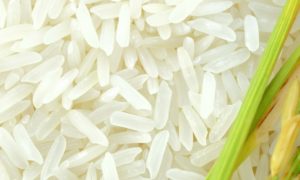Vietnamese rice prices fall due to increased supply of new season in India

India’s rice export prices remain stable due to strong demand from African nations and a weaker rupee, despite higher production costs. Vietnam sees a slight price drop due to increased supply, while Thailand’s rice prices have risen slightly, influenced by a stronger baht. Expectations for a better crop in Thailand could stabilize prices moving forward.
The global rice market is experiencing mixed trends across major exporting countries, influenced by factors such as currency fluctuations, government policies, and supply-demand dynamics.
India: The export prices of rice from India have remained stable despite increasing supply of Kharif rice. India is benefiting from strong demand from African countries, which has prevented any significant price drop. The offer price for 5% broken Sela rice remains steady at $444-450 per ton, and 5% broken white rice is priced at $450-458 per ton. Additionally, the depreciation of the Indian rupee has helped Indian exporters maintain competitive prices, boosting their profit margins. However, the price of paddy has increased due to the government raising the minimum support price, which could impact overall production costs.
Vietnam: In Vietnam, the export price for 5% broken rice has decreased slightly, from $517 per ton to $509. This is primarily due to an increase in supply following a positive production outlook. The U.S. Department of Agriculture has raised its rice production estimate for Vietnam, reflecting a significant rise in cultivated area, particularly in the Mekong Delta, which is expected to improve output. This increased supply, combined with stable demand, has put downward pressure on prices.
Thailand: Thailand’s rice export prices have seen a slight increase, from $510 last week to $510-515 per ton. The rise is mainly attributed to the strengthening of the Thai Baht, which makes exports more expensive. While demand has stabilized towards the end of the year, there is optimism regarding a better crop in the upcoming year, which could help maintain supply levels.
In summary, India continues to maintain stable prices due to strong demand, while Vietnam sees a slight price reduction due to increased supply. Thailand’s prices have risen slightly due to a stronger currency, though expectations for better crop conditions could stabilize the market moving forward.
To read more about Rice News continue reading Agriinsite.com
Source : Investing.com














